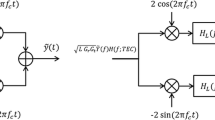Abstract
Patricia Doherty joins the regular contributors of this column to discuss the correlation between measurements of solar 10.7 cm radio flux and ionospheric range delay effects on GPS. Mrs. Doherty has extensive experience in the analysis of ionospheric range delays from worldwide systems and in the utilization and development of analytical and theoretical models of the Earth's ionosphere.
Ionospheric range delay effects on GPS and other satellite ranging systems are directly proportional to the Total Electron Content (TEC) encountered along slant paths from a satellite to a ground location. TEC is a highly variable and complex parameer that is a function of geographic location, local time, season, geomagnetic activity, and solar activity. When insufficiently accounted for, ionospheric TEC can seriously limit the performance of satellite ranging applications. Since the ionosphere is a dispersive medium, dual-frequency Global Positoning System (GPS) users can make automatic corrections for ionospheric range delay by computing the apparent difference in the time delays between the two signals. Single-frequency GPS users must depend on alternate methods to account for the ionospheric range delay. Various models of the ionosphere have been used to provide estimates of ionospheric range delay. These models range from the GPS system's simple eight-coefficient algorithm designed to correct for approximately 50% rms of the TEC, to state-of-the-art models derived from physical first principles, which can correct for up to 70 to 80% rms of the TEC but at a much greater computational cost.
In an effort to improve corrections for the day-to-day variability of the ionosphere, some attempts have been made to predict the TEC by using the daily values of solar 10.7 cm radio flux (F10,7). The purpose of this article is to show that this type of prediction is not useful due to irregular, and sometimes very poor, correlation between daily values of TEC and F10.7. Long-term measurements of solar radio flux, however, have been shown to be well correlated with monthly mean TEC, as well as with the critical frequency of the inonospheric F2 region (foF2), which is proportional to the electron density at the peak of the ionospheric F2 region. © 2000 John Wiley & Sons, Inc.
Similar content being viewed by others
Author information
Authors and Affiliations
Rights and permissions
About this article
Cite this article
Doherty, P., Klobuchar, J. & Kunches, J. Eye on the Ionosphere: The Correlation between Solar 10.7 cm Radio Flux and Ionospheric Range Delay. GPS Solutions 3, 75–79 (2000). https://doi.org/10.1007/PL00012820
Published:
Issue Date:
DOI: https://doi.org/10.1007/PL00012820




